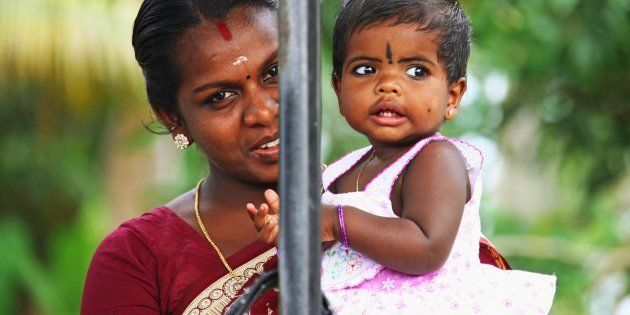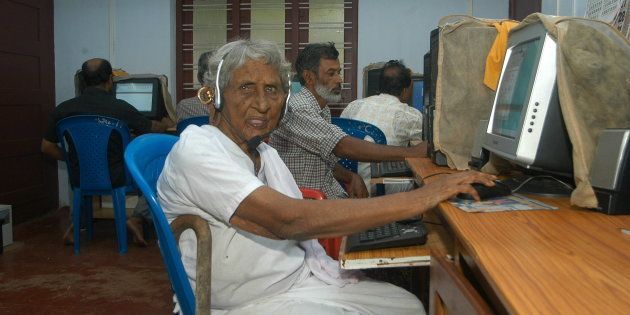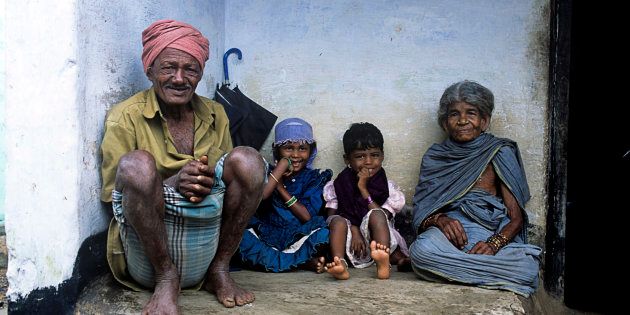
A few days ago, Kerala's veneer of modernity and exceptional record of human development was torn open when the state's minister for the welfare of scheduled casts, tribes and backward classes made some pejorative remarks about tribal people in the state.
In response to a question on child deaths in the state's tribal areas, minister AK Balan reportedly said: "Four have died. One was because of abortion. That means the pregnancy happened during your (UDF) period. It was delivered now. I am not responsible for that. The second one was due to some problem with the heart valve. That pregnancy was also during your period..."
Instead of feeling sorry for the infant deaths, Balan appeared nonchalant and dismissive. What he was trying to ridiculously establish was that the deaths had occurred because of the pregnancies that happened during the previous Congress-led UDF government. The plain summary of his response was this: if the pregnancies of tribal women during your period go bad during my government's term, is not my problem.
"Four have died. One was because of abortion. That means the pregnancy happened during your (UDF) period. It was delivered now. I am not responsible for that."
What should have evoked shock and outrage led to laughter and thumping of desks. In a couple of days, activists and media woke up to the fact that what the minister had said was callous and utterly insensitive, that too from the benches of a purportedly left government that claims to stand up for the downtrodden.
Along with the insensitivity of the minister and those legislators who laughed hearing his comments, the celebrated Kerala Model of development stood thoroughly exposed. If the Kerala Model claims very high human development indices—from literacy and life expectancy to infant and maternal mortality—some of which are comparable to that of developed countries, the tribals in the state are not part of it. In human development terms, they live in a different universe that's not in Kerala. In fact, that universe doesn't even come close to Kerala.

It's a story of exclusion, neglect and double standards. Every single development indicator of the tribal people, or STs (Scheduled Tribes) as our governments call them, underscores this distressing reality.
Here are some examples.
The decadal population growth rate of the state between 2001 and 2011 is 4.86, but for the tribals it's about seven times higher - 33.1. It's even higher than the national tribal average of 23.66. In fact, some of the poorer states such as Orissa, Assam and Jharkand have done better than Kerala. What does it indicate? The access of tribal people to health and family welfare services in Kerala is far worse than that of not only the rest of the people in the state, but also in many other parts of India.
This disparity in access to health services and poor maternal health is clearly reflected in child mortality, that Prime Minister Narendra Modi had picked on recently to present the state in a poor light. Although the latest figures are not available, given that the IMR for the general population hasn't changed much in the last ten years, the rates for tribals is five times higher. The under five mortality is more than 80.
Similarly, the gap in literacy between the general population and tribals in Kerala is among the worst in the country - 18.2, which is higher than the national average. While the general literacy of the state is 94.0, for the tribal people, it's only 75.8.

The trend continues in crime against tribals too. In terms of the rate of total cognizable crimes against STs, Kerala comes second only to Rajasthan. The state appears thoroughly exposed when its crime rate against STs (27.8) is compared with that of its neighbour Tamil Nadu (2.3). As regards crimes against tribal women, or more precisely outraging the modesty, Kerala tops the country.
The poverty levels of tribals in Kerala may not appear very bad compared to other states, but the rate of impoverishment is alarming indeed. Between 2009-10 and 2011-12, the percentage of tribal population living below the poverty line in urban areas has increased from 5 to 13.6. In rural areas, it rose from 24 to 41. In comparison, in TN, it has in fact reduced from 17.6 to 2.8 while in many states, including Madhya Pradesh, the number of tribal people living below poverty line has substantially decreased. Tribal people in Kerala are clearly getting considerably poorer.
In fact, it's a long and unpleasant list denoting a terrible life that also includes poor housing, poor schools, land alienation, nutrition and overall disenfranchisement that punctures the Kerala Model of Development.
The educational profiles of tribal people also demonstrate clear exclusion. Their participation in engineering and technology education is worse than that in states such as Tamil Nadu, Karnataka and Telangana; while in teaching, Kerala is among the worst. Fortunately in medicine, although the representation is very nominal, Kerala is doing better than other states. Given the intergenerational impact of education, poor access to strategic education is a crime because it will certainly hamper their socio-economic advancement.
In fact, it's a long and unpleasant list denoting a terrible life that also includes poor housing, poor schools, land alienation, nutrition and overall disenfranchisement that punctures the Kerala Model of Development. And the most shocking part is that they are a tiny, very tiny, population: less than five lakh people (484839 persons to be precise) that is only 1.5 per cent of the total number of people in the state. And a large number of them live in just three districts making interventions easier than in many other states.
For a dispassionate analyst, they can be considered a statistical outlier in terms of numbers, but in reality they are not because they form a distinctive group of people for whom both the central and state governments have been running development schemes since the 1970s.
Probably, in terms of per capita allocation of development funds on paper, tribals might have accounted for a lot of money - somebody, probably the CAG, has to add all that up. The cash-transfer hawks will be happy.
There have been about seven Integrated Tribal Development Projects (ITDPs) with another eight locations under Dispersed Tribal Areas. There have also been about 27 Plan Schemes by the state government and eight 100 per cent centrally assisted schemes.
They run into crores of rupees and covers almost everything–from health to education and housing. But, within Kerala's exalted development landscape they are confined to primitive lives. Probably, in terms of per capita allocation of development funds on paper, tribals might have accounted for a lot of money - somebody, probably the CAG, has to add all that up. The cash-transfer hawks will be happy.
Not that the Left and the Congress governments have been unaware of what has been going wrong because the indicators have been startling. Even the CAG in 2009 had held the state government accountable for poor and incomplete implementation of projects and wastage of money.
Still they are making fun of pregnancies in the assembly.
It's an incredible summary that in every single sphere of development, the tribal people in Kerala are nowhere near an average Malayali. It's as if they live alone in their own poor outback that doesn't belong to the state.
A development model that excludes a whole civilisation is farce and elitist and it's time for a review.
(Data from the Tribal Welfare and Development reports of the Government of India for 2014-15 and 2015-16; CAG Audit Report (Civil) for the year ended 31 March 2009, Kerala; and Planning Commission paper on tribal land alienation)